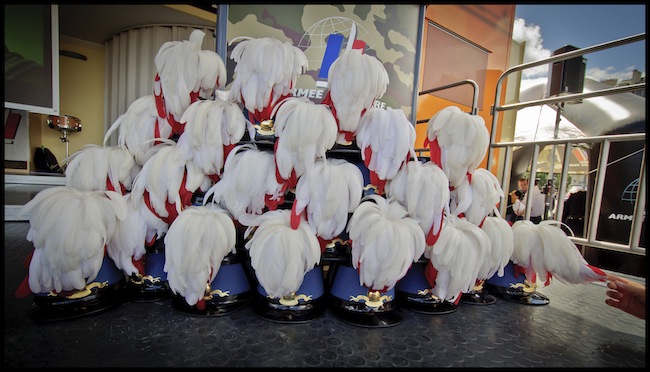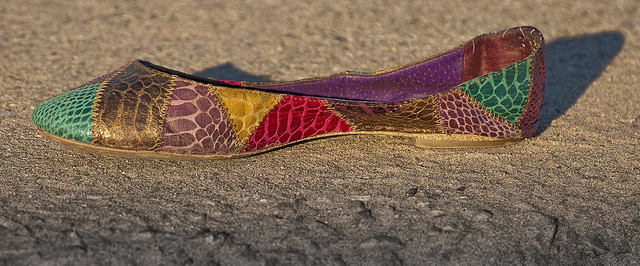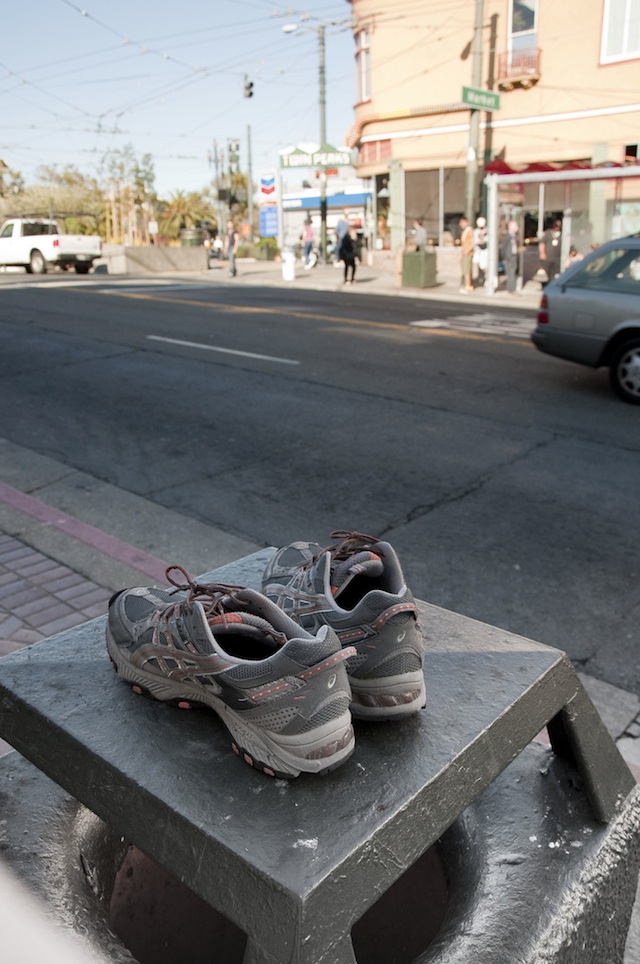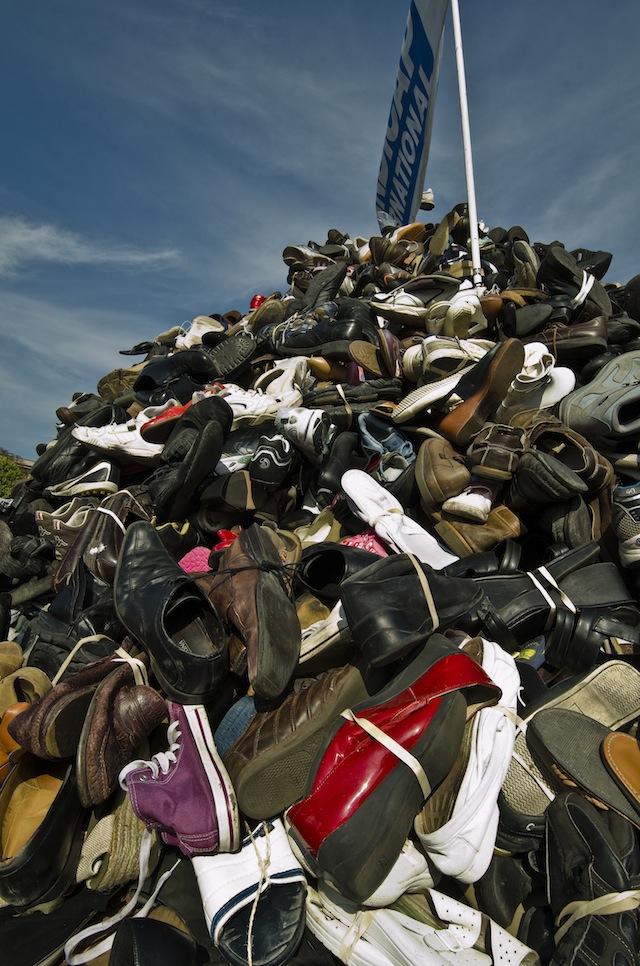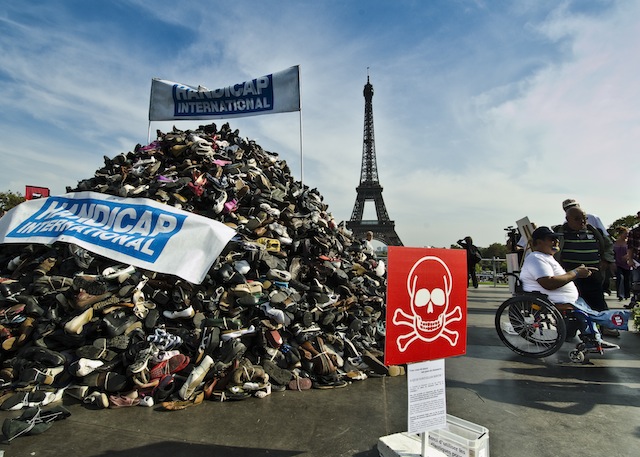The Face of Tomorrow's Army?
 07.18.2012
07.18.2012 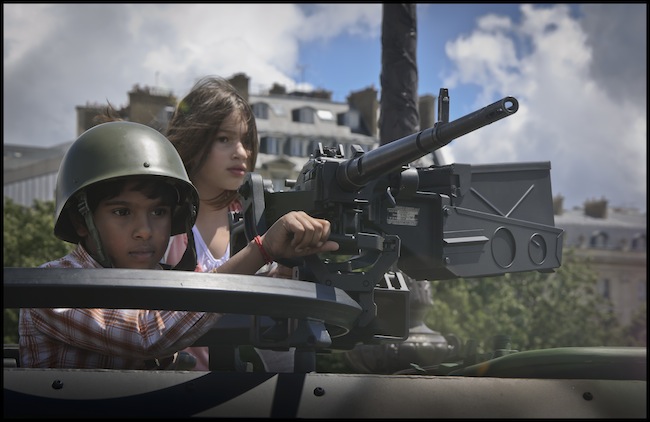
Though we love parades, we didn't attend last Saturday's Bastille Day number, which is much more regimented than most in Paris. A crowd of up to a half-million on the Champs Elysses, lots of barricades, heavy crowd control, screaming fighter jets overhead, and no access for interesting photos. Ares triumphant. In sharp contrast to, say, the Dionysian revelry of the Paris Gay Pride parade.
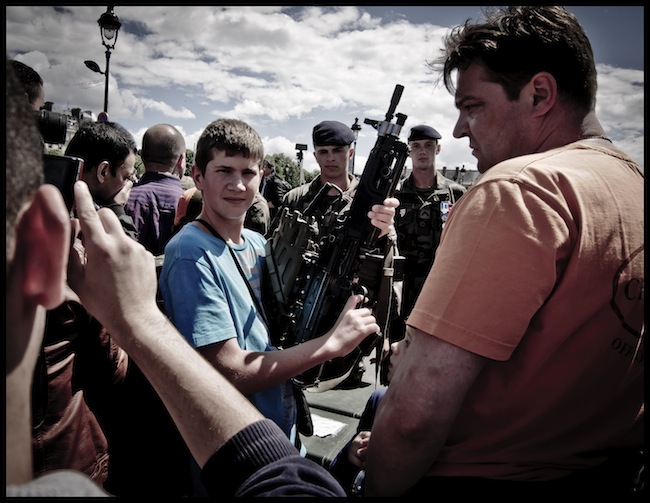
But we did wander, post-parade, over to the Esplanade des Invalides, the huge greensward in front of the gold-domed Les Invalides, which houses the military museum of France, and Napoleon's Tomb. This entire swath of the seventh arrondissement is devoted to France's past and present military glory, and the post-parade exhibits are like a trade show for the public; each branch of the service displays and recruits, from the French Foreign Legion, to the regular army, navy, and marines, to the gendarmerie.
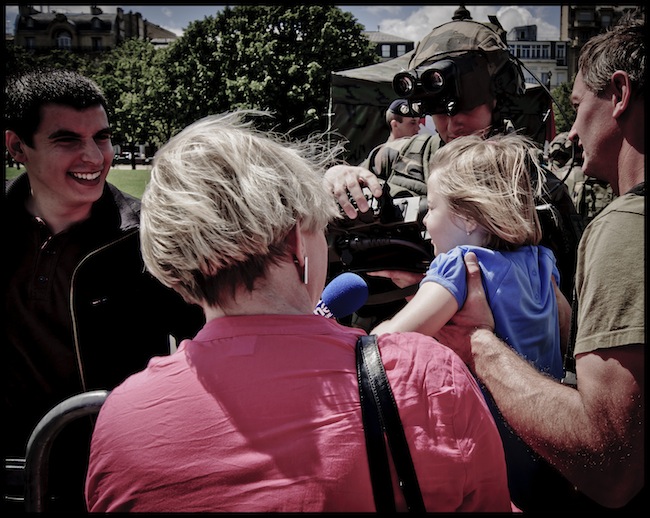
As long-time peace activists who wear our hearts on our sleeves, we won't get into a long anti-war riff. We just want to note that this was a marketing event, and War has lots of toys and tools on its side that make it look a lot more fun than Peace. There was nothing at Saturday's trade show that would make one think about the consequences of war. The world's literature is replete with heart-choking, compelling anti-war novels, films, articles, etc.--like our friend Chris Abani's horrifying novella of child soldiers, Song for Night. But somehow the message still isn't getting across.
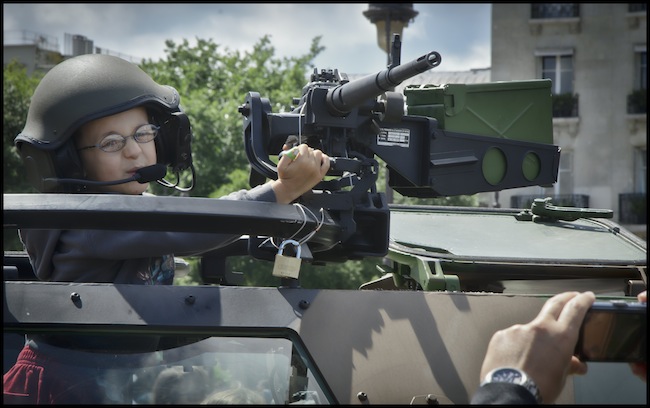
We are Parisians, but we remain Americans. Our country of origin is the largest arms supplier in the world, our adopted country is fourth.

The U.S.A. spends around twenty percent of its yearly budget on defense, up to half if you figure spending the way the War Resisters League does.
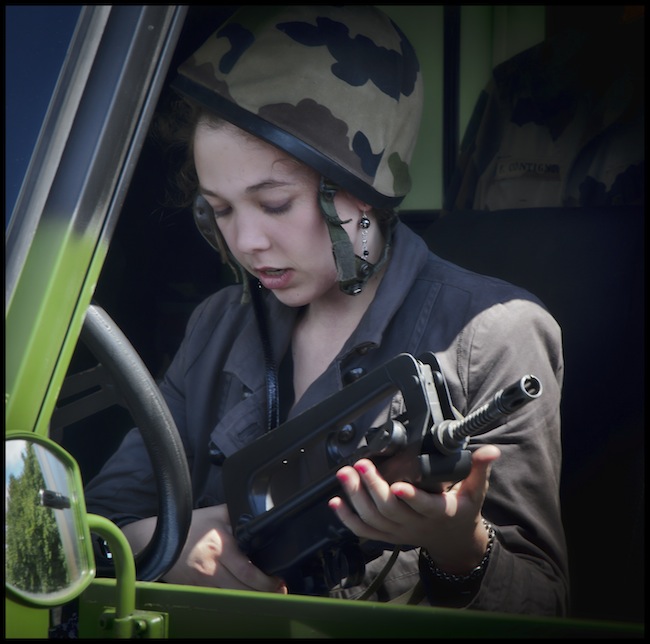

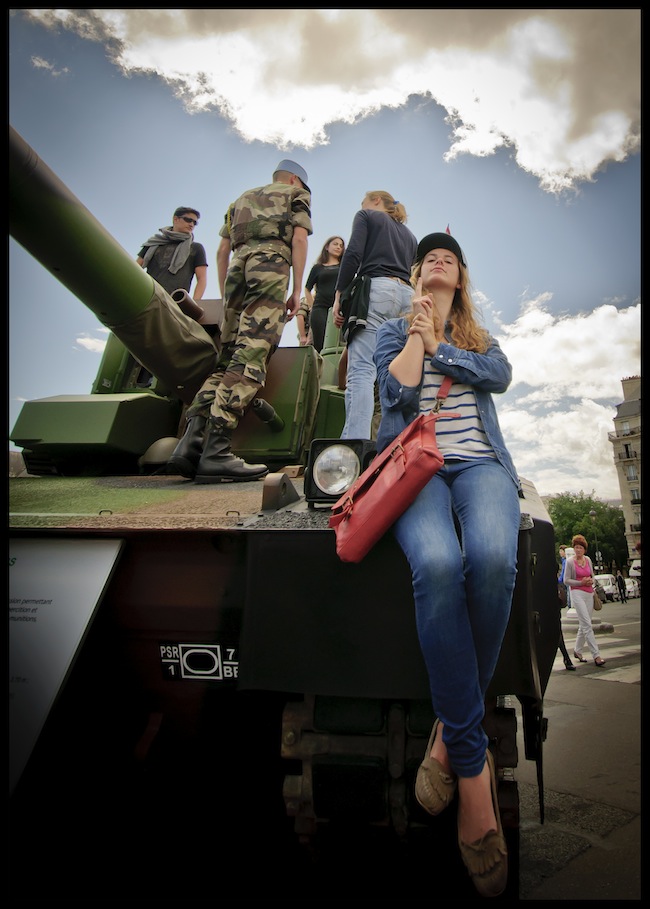
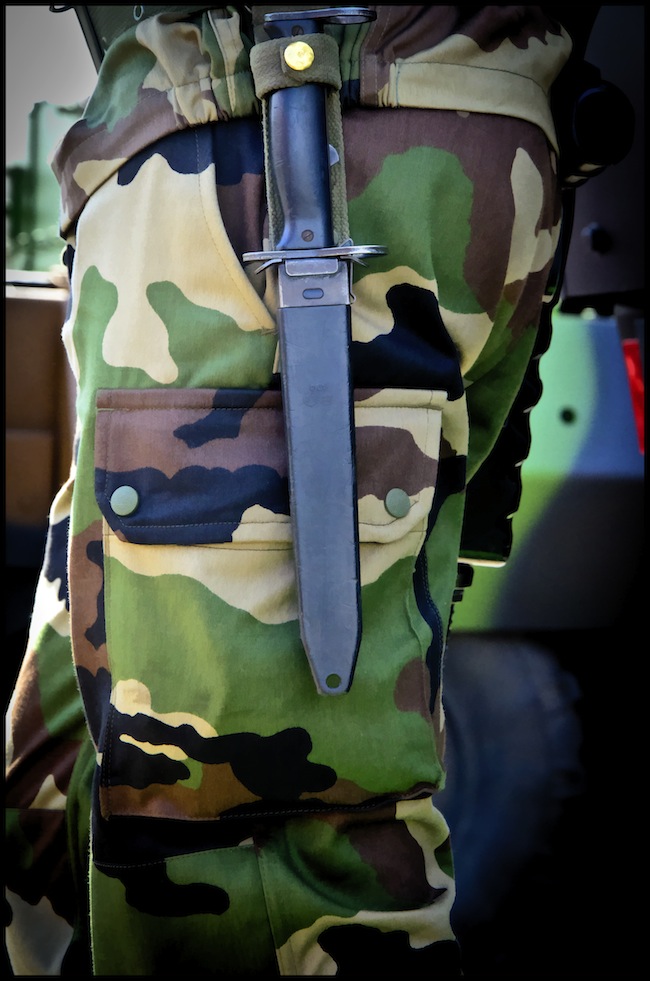
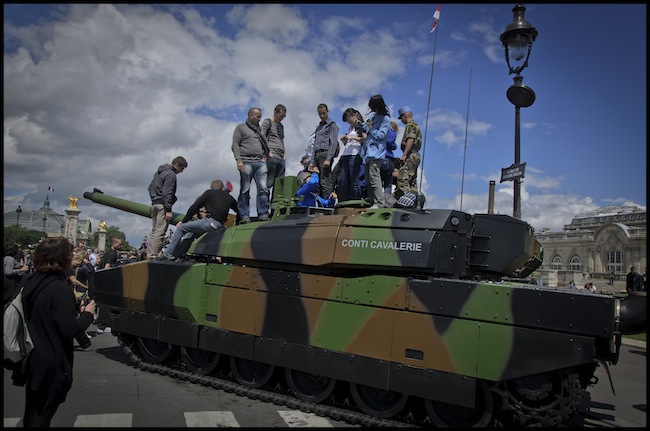
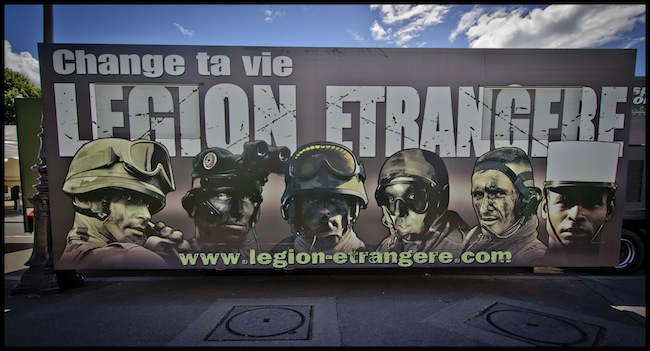
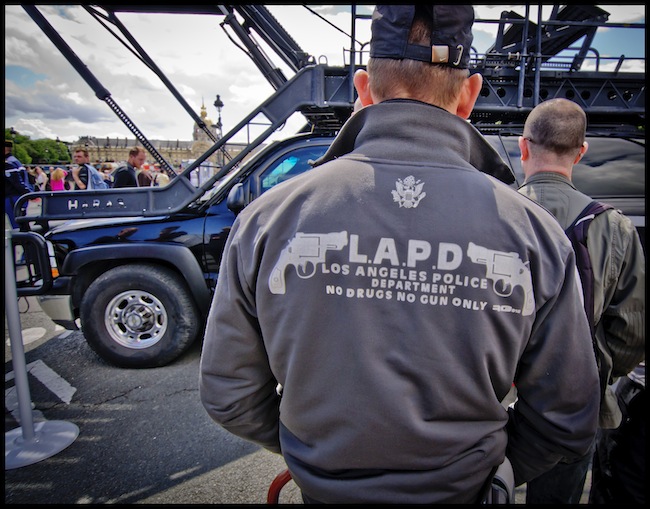
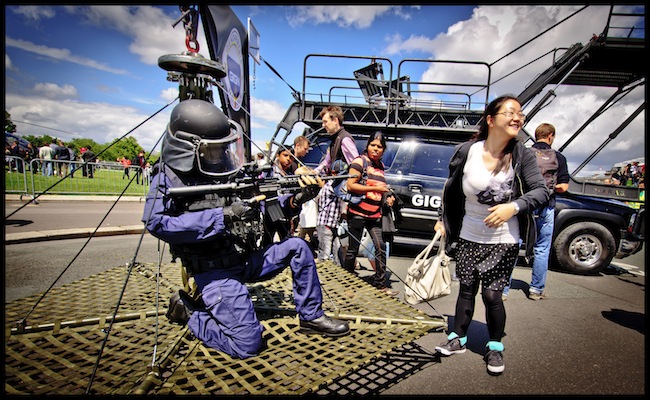

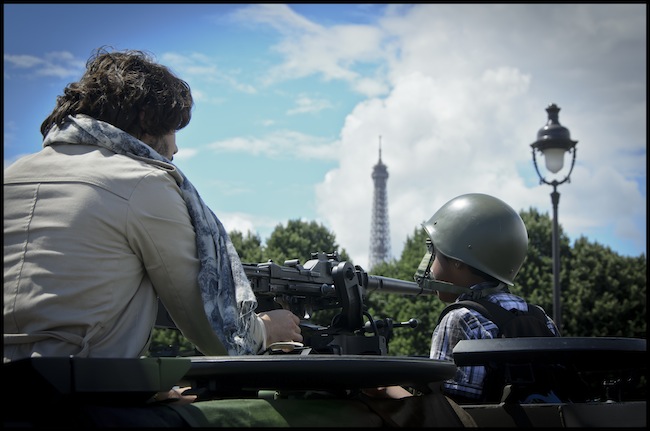
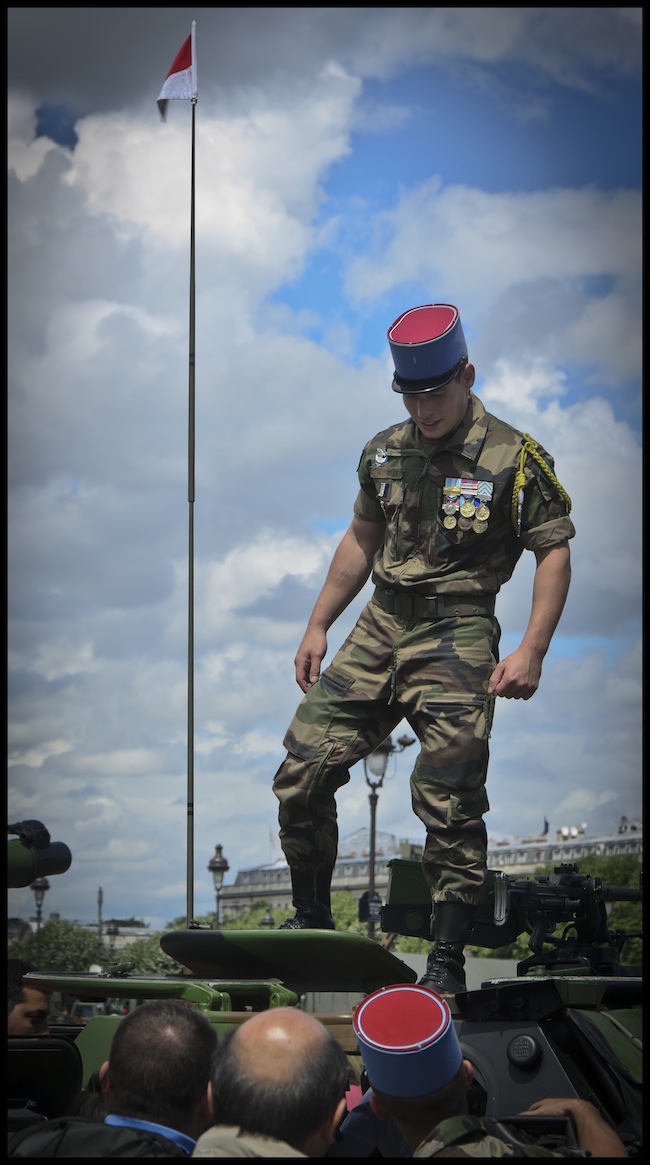
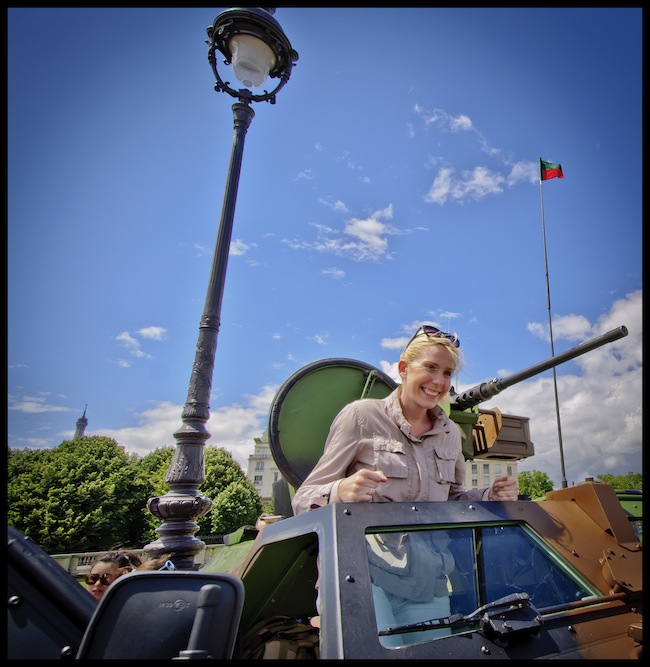
Given the vast sums of money at stake, it's no wonder that War spends a lot of energy looking attractive. Would that Peace had as effective a marketing machine.
